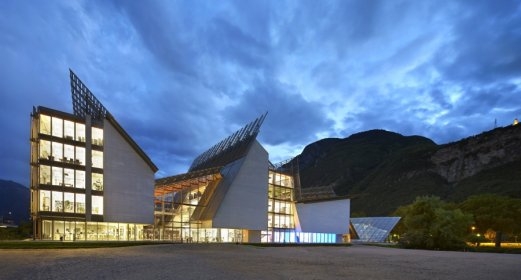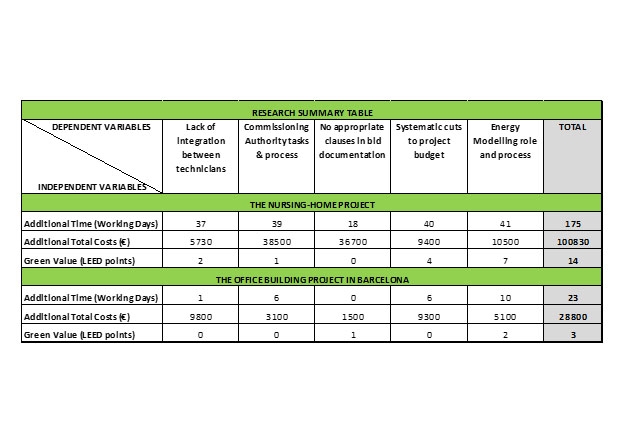The integration of green-building tasks and project-design process
The development of a green-building project following a specific reference standard such as LEED, brings new conditions and restrains for all subjects involved in the process. Such changes affect technicians, owners, bureaucracy and also the management tasks either during design or construction phases. Within this scope, the management of sustainability-related activities plays a key role for the optimization of the design-project development.
A research developed by Green Building Factory and the Polytechnic University of Valencia (UPV) analyzed the design process of two different case-study projects undergoing the same green-building certification from the project management perspective. In both project sustainability-related activities were performed throughout the design process, however, in one of them such activities were integrated to the building-design development and in the other they were not.
A new methodology was created in order to analyze the projects and evaluate the effects of detected project-management issues under three different points of view: costs, time and building sustainability. Such “issues” were identified by researchers on the basis of the LEAN-definition of “waste”. The scope of the research is to demonstrate a positive relationship between integration of the process green-building tasks and successful development of green-building projects within the European construction environment. The results showed that integration of green-building tasks through the development of the design process can considerably affect the cost, schedule and sustainability of the project design.
These results, obtained from the data collection process, allowed researchers to identify the project priorities or, in other words, the independent variables that had to be considered for the scope of this research. Such independent variables are:
- Time deviation: intended as the delay suffered by all sustainability-related activities of the project impacted by any of the project management issues during the design-phase development.
- Cost deviation: intended as all additional costs caused by project-management issues for the development of sustainability-related activities.
- Sustainability deviation: intended as the loss of certification points, under the LEED reference standard, caused by project-management issues for the development of sustainability-related activities.
The analysis of the results highlighted the positive relationship between process integration and development of green-building projects which has to be perceived from a broad perspective. Integration intended as physical integration, in which each component can physically interact with each other, and timely integration where technicians involved interact on a frequent basis with each other. Promoting this broad concept of integration in relationship with the development of green-building projects has a great potential impact on the business especially at an international scale where subjects involved have different backgrounds, benchmark and procedures. This leads to the first contribution of the present study: the quality of the project sustainability features could be improved by enhancing the integration between subjects involved in the design process.
Researcher demonstrate the existence of a relationship between the level of project integration and sustainability for the development of green-building projects. The cross-case analysis showed that both fields are mutually linked and that the efficacy of one can impact the success of the other. Following the literature review researchers focused also on the strong relationship between project management and process integration. The relationship between project management and green-building development can also be seen as the relationship between two subjects which goal is to optimize the use of available resources. Let these resources be mainly time and costs for project management and water, energy and others for sustainability. Finally, all resources can be spent and both project management and sustainability focus on spending them the best possible way. This leads to the second contribution of the present study: the relationship between project management and green-building projects which also supports the relationship between sustainability and affordability.
The analysis of different case studies led researchers to identify a parallelism between design activities, (including architectural, mechanical, structural design) and sustainability-related activities. For one of the projects, such activities were not integrated in the design process on a frequent basis but were considered only sporadically for global meetings. This didn’t happened for the second case study where results were sensibly different. Researchers saw that the schedule developed for design-related tasks did not always coincide with the sustainability-related one and, being the LEED certification a long process with no specific deadlines, these activities were never considered in the global planning procedure and therefore, even if behind schedule, were never considered critical. This was the cause of several problems, such as, the misunderstanding of the CxA role or the lack of use given to the energy model. Considering sustainability-related tasks as critical activities within the global design planning and goal may prevent future issues for both sustainability features, budget and time spent. This is the third contribution of this study which follows the idea related to the priority of sustainability-related tasks.
This article is an abstract of a research developed by Alessandro Orsi, co-founder of Green Building Factory, and Eugenio Pellicer Armiñana, professor from the Universitat Politècnica de València (Spain), on January 2018.






